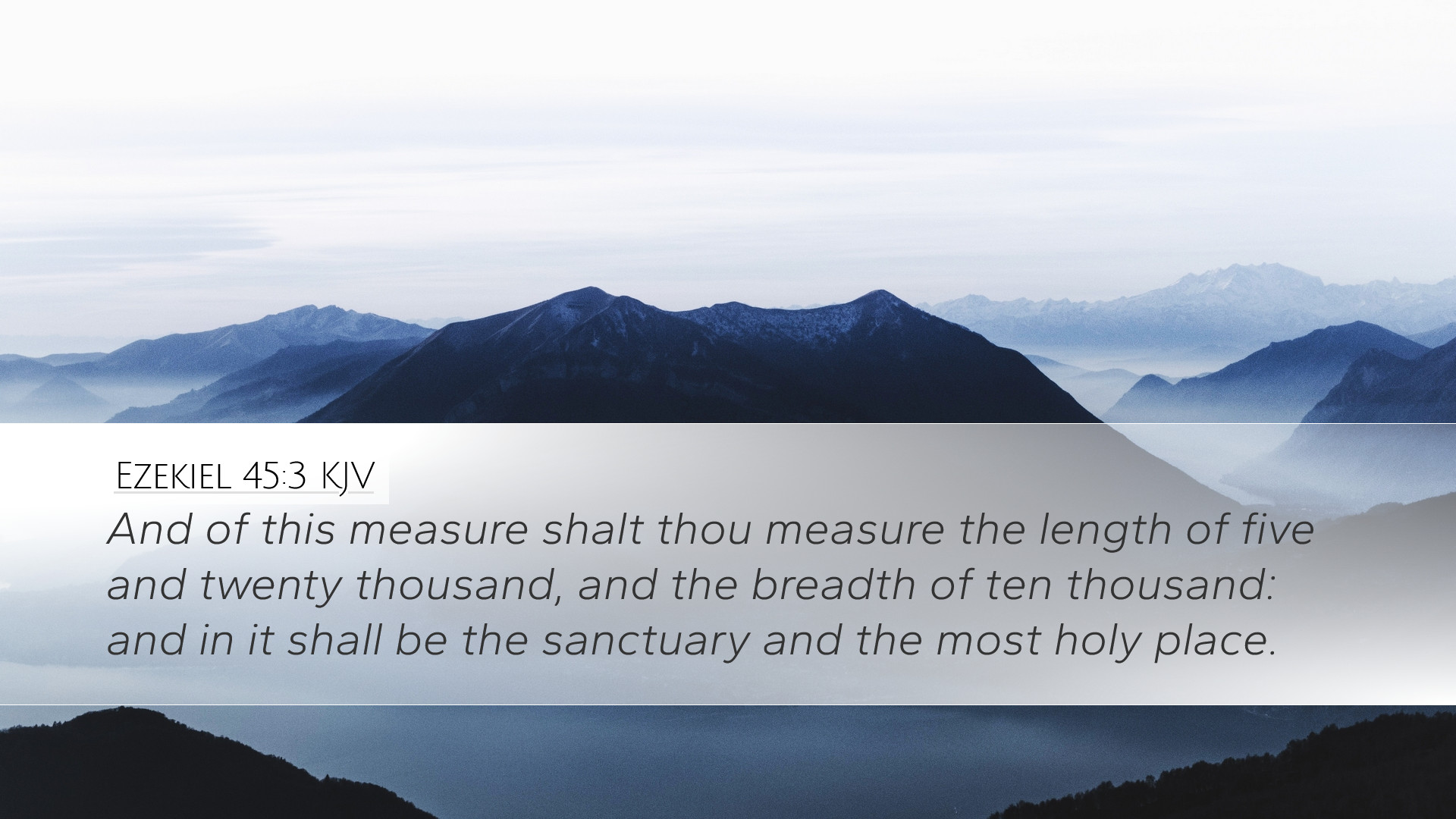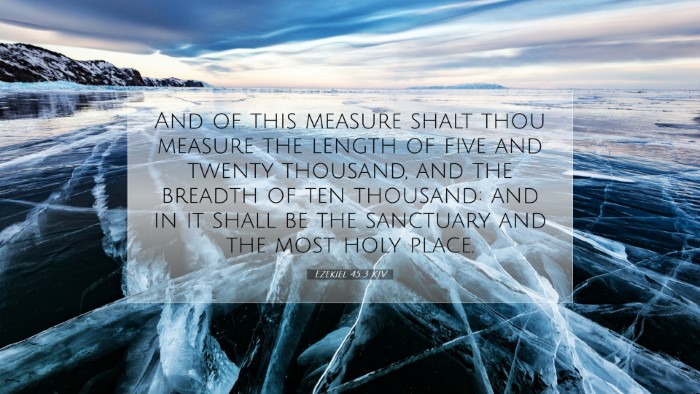Ezekiel 45:3 Commentary
Verse Text: "And of the measures of the land thou shalt measure the length of five and twenty thousand reeds, and the breadth of ten thousand: this shall be the holy portion for the priests, the ministers of the sanctuary, which shall come near to minister unto the Lord: and it shall be a place for their houses, and a holy place for the sanctuary."
Introduction
This passage from Ezekiel 45:3 presents a divine allocation of land dedicated for sacred purposes, particularly for the priests who serve in the sanctuary. As we delve into the commentaries by noted theologians such as Matthew Henry, Albert Barnes, and Adam Clarke, we will uncover the theological implications, historical context, and practical applications of this text. This analysis is essential for pastors, students, theologians, and Bible scholars in understanding the significance of land consecrated for God’s service.
Contextual Overview
Ezekiel's prophecies unfold during a time of significant turmoil for Israel, marked by the Babylonian exile and the destruction of the Temple. The latter chapters of Ezekiel shift towards a vision of hope, restoration, and future worship in a rebuilt Jerusalem. In this vision, detailed dimensions and allocations of the land serve both practical and symbolic roles, emphasizing God’s order and holiness in worship.
The Holy Portion
The “holy portion” mentioned in this verse denotes land set aside for the priests who minister in the sanctuary. Matthew Henry notes that:
- Separation for Service: The land is distinct, emphasizing the need for a separate space for those devoted to sacred duties. This separation is critical in various theological themes, including holiness and consecration.
- The Role of Priests: The priests not only perform rituals but also act as intercessors for the people, highlighting the significance of their ministerial role in the community.
Measurement Symbolism
The dimensions specified—twenty-five thousand reeds in length and ten thousand reeds in breadth—are not merely practical measurements. Albert Barnes highlights that:
- God’s Order: The specific measurements reflect God's desire for order and structure in worship. Just as He established creation with precise parameters, so too does He ordain the space for worship.
- Generosity of Space: The large allocation signifies God's provision for the priests, ensuring that they have ample space for their residences and the sanctuary, indicating His abundant provision for those who serve diligently.
Theological Insights
This verse opens up several theological themes crucial for understanding Scripture:
- Holiness: The concept of holiness is central. Adam Clarke emphasizes that this land is not just a physical space but a symbol of the divine presence. It reflects God's holiness and His desire for His people to be a holy priesthood.
- Worship and Community: The division of the land strengthens the relationship between God and His people. It illustrates that worship is communal and that the leadership (the priests) has a vital role in guiding the people in their relationship with God.
Practical Applications
For contemporary applications, this passage invites reflection on several areas:
- Church Leadership: Just as the land was dedicated to priests, modern church leaders are called to serve with dedication and integrity, pursuing holiness in their ministry.
- Community Spaces: This encourages churches today to create spaces dedicated to worship, offering an environment conducive to experiencing God’s presence.
- Allocation of Resources: It prompts a reflection on how churches allocate resources for ministry and whether they prioritize the needs of those serving in ministry roles.
Conclusion
The allocation of land described in Ezekiel 45:3 serves as a profound reminder of God's intent for His people to have a dedicated space for worship and service. Through the insights of Matthew Henry, Albert Barnes, and Adam Clarke, we understand the depth of meaning behind the physical measurements and the role of the priests. This commentary underscores the importance of holiness, the need for ordered worship, and the significance of community in our relationship with God. May this understanding inspire those in leadership and congregational roles to honor the sacredness of their ministry in every aspect of life.


